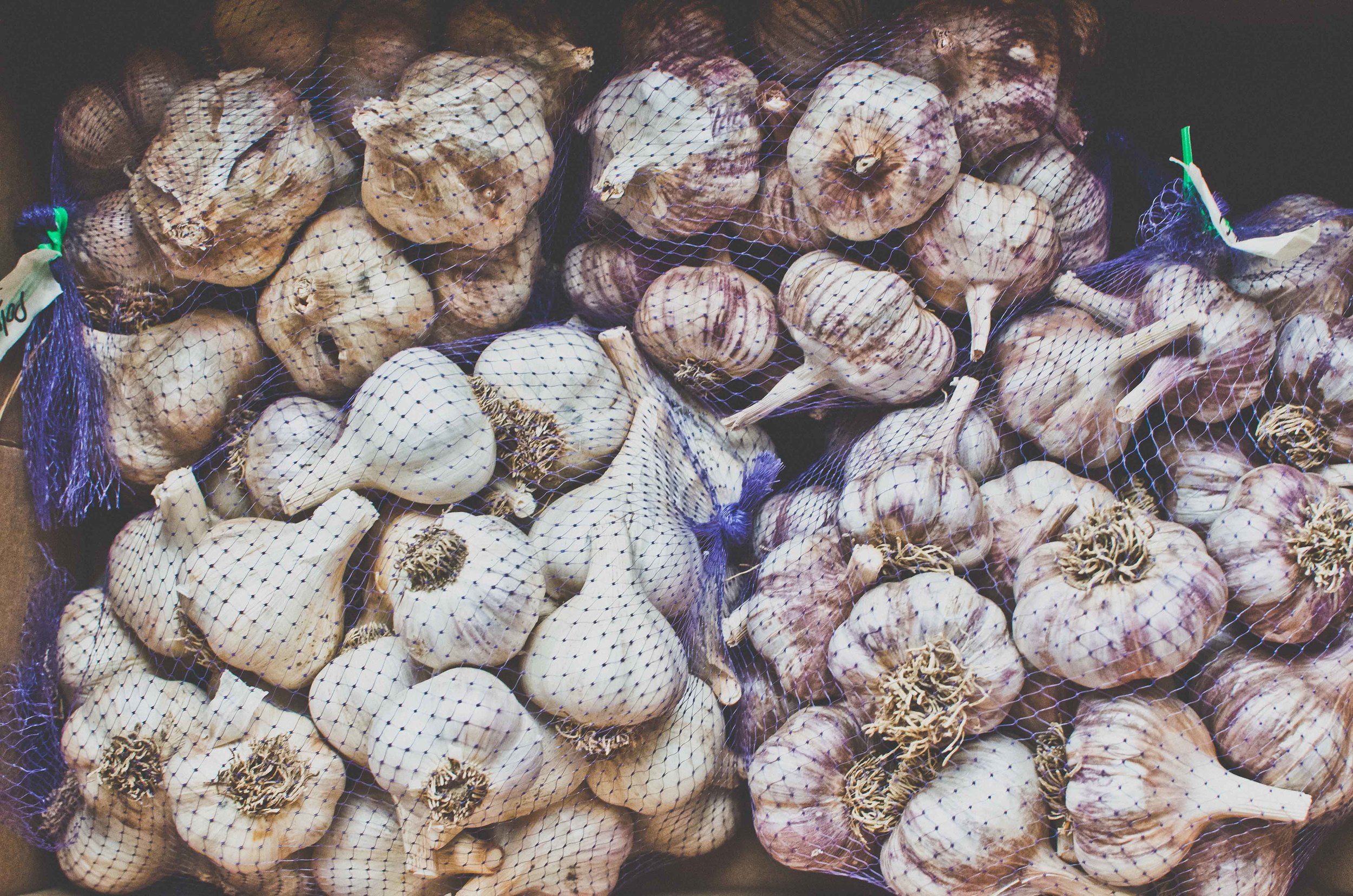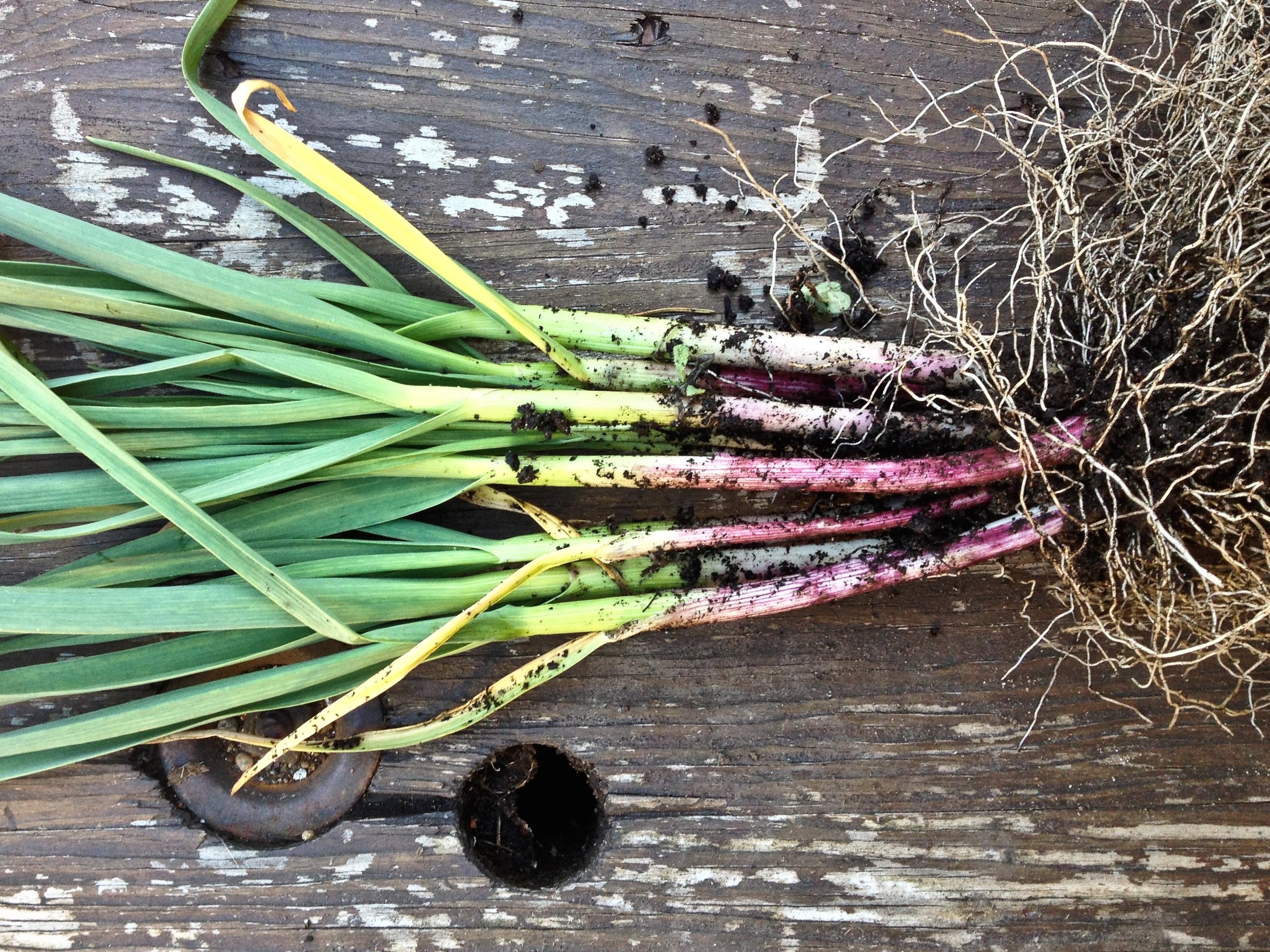Garlic is a member of the Allium family, which also includes onions, scallions, shallots and leeks.
Garlic is a very long season crop. Garlic grows best when planted in the fall because it must “vernalize.” When a crop requires vernalization, it means that it will grow best after prolonged exposure to cold temperatures. In the case of garlic, vernalization initiates the bulbing of the head.
To Plant:
Choose seed-stock. If you can’t find garlic seed in a local nursery or online, you can plant the organic garlic found in the produce section of your local grocery store. If buying seed from the grocery store, look for heads that are tight and have large, firm cloves.
Prepare soil: Loosen soil, check soil pH, mix in compost or balanced fertilizer,
Plant garlic 5-6 inches apart and 2-3 inches deep (pointy side up), depending on the size of the clove. The goal is to have the top of the clove covered under at least 1 inch of soil. If you are planting in a region where the ground freezes and thaws regularly, you may want to plant a little deeper to keep the cloves from being pushed out of the soil during the temperature changes.
Cloves should start to emerge in early spring!
Once cloves have emerged side dress with balanced granular fertilizer.
Hardneck vs. Softneck:
HARDNECK: Hardneck garlic has a stiff central stem with fewer, but larger cloves than softneck. It’s storage life is shorter than softneck so it is usually grown for specialty markets such as restaurants and farmers markets. Many people feel it has better flavor than softneck and is easier to peel. Hardneck garlic is the source of garlic “scapes”, the coveted edible flowering stalk the plant produces late in the spring.
SOFTNECK: Softneck garlic has a flexible central stem, and the bulbs tend to have many small cloves and thick wrappers skins. This type of garlic stores well, so it is most often the variety you would find at the grocery store.
Great garlic varieties to plant this fall:
HARDNECK: German White, Georgian Fire, and Chesnok Red
SOFTNECK: Polish White, Inchelium Red










